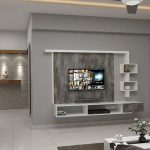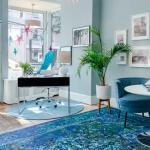Interior design is a key element of creating a space that is not only visually appealing but also functional and comfortable. It involves a careful balance of aesthetic and practical considerations to ensure that every aspect of a room is well thought out and cohesive. From the layout of furniture to the selection of colors and textures, interior design plays a crucial role in shaping the atmosphere of a room.
One of the most important aspects of interior design is space planning. This involves determining the best layout for a room based on its size and shape, as well as the activities that will take place in it. By carefully considering the placement of furniture and other elements, interior designers can ensure that a space is both visually appealing and conducive to its intended use.
Another key component of interior design is the selection of colors and materials. The colors used in a room can have a significant impact on its overall atmosphere, with warm tones creating a cozy and inviting feel, while cooler tones can evoke a sense of calm and relaxation. Similarly, the choice of materials for furniture, flooring, and other surfaces can influence the look and feel of a room, as well as its durability and ease of maintenance.
Lighting is another essential element of interior design, as it can greatly affect the mood and functionality of a space. By strategically placing light sources and choosing the right type of lighting fixtures, designers can create a well-lit and visually interesting environment. In addition to artificial lighting, natural light also plays a significant role in interior design, as it can help to create a sense of openness and connection to the outdoors.
Texture is another important consideration in interior design, as it can add depth and visual interest to a room. By incorporating a variety of textures, such as rough and smooth surfaces, designers can create a dynamic and tactile environment. Textures can also help to reinforce the overall theme or style of a space, whether it be sleek and modern or rustic and traditional.
Finally, the finishing touches in interior design can make a significant difference in the overall look and feel of a space. Details such as artwork, accessories, and decorative objects can add personality and character to a room, helping to tie together the various elements of the design. By paying attention to these small but important details, designers can create a cohesive and visually stunning interior that reflects the tastes and needs of the occupants.
 efistu.com Home Decor
efistu.com Home Decor
















